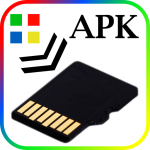Description
How do I check if my APK is 32 bit or 64-bit?
To check whether an APK (Android application package) is 32 bit or 64-bit, you can follow these steps:
- Using the Android Studio:
- Open Android Studio, if you have it installed. If not, you can download it from the official Android developer website.
- Once Android Studio is open, click on the “File” menu, then select “Open” and navigate to the directory where your APK file is located.
- After opening the APK in Android Studio, click on the “Build” menu and select “Analyse APK…”
- In the file dialog that appears, navigate to the APK file you want to check and select it.
- Android Studio will then display information about the APK, including its architecture (32-bit or 64-bit). Look for the “ABIs” (Application Binary Interfaces) section, and it will show whether the APK contains 32-bit or 64-bit code or both.
- Using the AAPT Tool:
- If you don’t have Android Studio, you can also use the Android Asset Packaging Tool (AAPT), which is a command-line utility that comes with the Android SDK.
- Open a command prompt or terminal window on your computer.
- Navigate to the directory where your APK file is located using the
cdcommand. - Run the following command, replacing “your_app.apk” with the actual filename of your APK:
lua
aapt dump badging your_app.apk | findstr "package architecture"
If you’re on a Unix-like system (e.g., Linux or macOS), you can use
grepinstead offindstr:cssaapt dump badging your_app.apk | grep "package: name='com.your.package' versionCode='X' versionName='X' platformBuildVersionName='X' platformBuildVersionCode='X' platformBuildVersionCode='X' platformBuildVersionName='X' platformBuildVersionCode='X' platformBuildVersionName='X' platformBuildVersionCode='X' platformBuildVersionName='X' platformBuildVersionCode='X' platformBuildVersionName='X' platformBuildVersionCode='X' platformBuildVersionName='X' platformBuildVersionCode='X' platformBuildVersionName='X' platformBuildVersionCode='X' platformBuildVersionName='X' platformBuildVersionCode='X' platformBuildVersionName='X' platformBuildVersionCode='X' architecture"
- In the output, look for the “architecture” entry. It will specify whether the APK contains 32-bit (
armeabi-v7a) or 64-bit (arm64-v8a) code or both.
These methods will help you determine whether your APK is 32-bit or 64-bit. It’s worth noting that modern Android devices often support both 32-bit and 64-bit architectures, so having both in your APK is generally recommended for broad compatibility.
What tools or software can help me convert a 32-bit APK to a 64-bit APK?
Converting a 32-bit APK to a 64-bit APK typically involves modifying and recompiling the app’s code and resources to support 64-bit architectures. Here are some tools and software that can assist you in this process:
- Android Studio:
- Android Studio, the official integrated development environment for Android, provides comprehensive support for creating and managing 64-bit APKs. You can use it to update your project, dependencies, and settings to target 64-bit architectures. Android Studio can also help you identify and resolve compatibility issues.
- NDK (Native Development Kit):
- If your app includes native code written in languages like C or C++, you’ll need to update and recompile this code for 64-bit architectures using the Android NDK. Android NDK tools such as
ndk-buildand CMake can be used for this purpose.
- If your app includes native code written in languages like C or C++, you’ll need to update and recompile this code for 64-bit architectures using the Android NDK. Android NDK tools such as
- Gradle Build System:
- Gradle, the build system used by Android Studio, allows you to configure your project to support 64-bit architectures. You can specify which ABIs (Application Binary Interfaces) your app should target, including
armeabi-v7a(32-bit) andarm64-v8a(64-bit). Gradle will compile the appropriate native libraries for each ABI.
- Gradle, the build system used by Android Studio, allows you to configure your project to support 64-bit architectures. You can specify which ABIs (Application Binary Interfaces) your app should target, including
- Third-Party Libraries:
- Depending on the libraries you use in your app, you may need to ensure that they have 64-bit support. Some libraries may require updates or replacements to work with 64-bit architectures. Check with the library maintainers or community for compatibility information.
- Testing Tools:
- Utilize testing tools and emulators provided by Android Studio to verify that your converted 64-bit APK works as expected on both 32-bit and 64-bit devices. This includes running tests, analyzing performance, and checking for any runtime issues.
- Documentation and Online Resources:
- Android’s official documentation and online resources are valuable sources of information when it comes to converting APKs to 64-bit. The Android Developer website provides detailed guides and best practices for ensuring compatibility with both 32-bit and 64-bit architectures.
- Community Support:
- Engage with the Android development community through forums, discussion boards, and social media. Other developers may have faced similar challenges and can provide insights, tips, and solutions for converting your APK to 64-bit.
It’s important to note that the specific steps and tools you’ll need to use may vary depending on your app’s complexity, the presence of native code, and your development environment. Always refer to the latest Android documentation and guidelines for up-to-date information on 64-bit support.
Are there any specific steps or guidelines to follow when converting an APK from 32-bit to 64-bit?
Yes, there are specific steps and guidelines to follow when converting an APK from 32-bit to 64-bit to ensure compatibility with modern Android devices. Here’s a general outline of the process:
- Identify the Need for 64-bit Support:
- First, assess whether your app truly needs 64-bit support. Many Android devices support both 32-bit and 64-bit architectures, but if your app includes native code or uses libraries that require 64-bit support, you should proceed with the conversion.
- Update Development Environment:
- Ensure you have the latest version of Android Studio and the Android NDK (Native Development Kit) installed on your development machine.
- Check Native Code:
- If your app includes native code written in C or C++, review and update it to support 64-bit architectures using the Android NDK. Make sure to address any potential issues, such as data type mismatches and memory allocation.
- Configure Gradle Settings:
- Modify your app’s Gradle build files to specify the target ABIs (Application Binary Interfaces). You can include both
armeabi-v7a(32-bit) andarm64-v8a(64-bit) in your APK by adding the following to yourbuild.gradlefile:gradleandroid {
...
splits {
abi {
enable true
reset()
include 'armeabi-v7a', 'arm64-v8a'
universalApk false
}
}
...
}
- Modify your app’s Gradle build files to specify the target ABIs (Application Binary Interfaces). You can include both
- Update Libraries and Dependencies:
- Check if any third-party libraries you use in your app require updates to support 64-bit architectures. Consult their documentation and ensure you’re using the latest versions.
- Recompile and Test:
- Rebuild your project in Android Studio to recompile the code and resources for both 32-bit and 64-bit architectures. Make sure there are no compilation errors.
- Test your app thoroughly on both 32-bit and 64-bit Android emulators and devices to identify and address any runtime issues, crashes, or performance problems.
- Optimize for Performance:
- Optimize your app’s native code for 64-bit performance where necessary. Some code may benefit from 64-bit registers and instructions, while other parts may need fine-tuning.
- Update Google Play Store Listing:
- If you distribute your app through the Google Play Store, update your app’s listing to indicate that it supports 64-bit architectures.
- Final Testing and Quality Assurance:
- Conduct comprehensive testing on a variety of Android devices and configurations, including different screen sizes and Android versions, to ensure your app works flawlessly.
- Release the Updated APK:
- Once you are confident that your app works well on both 32-bit and 64-bit devices, release the updated APK to the Google Play Store or your distribution platform of choice.
- Monitor User Feedback:
- Keep an eye on user reviews and feedback after the update to address any new issues that may arise.
- Documentation:
- Document the changes and updates you made to support 64-bit in your app, especially if you’re working in a team or for future reference.
Remember that the specifics of this process may vary depending on the complexity of your app and its dependencies. Always refer to the latest Android documentation and guidelines for up-to-date information on 64-bit support.
What are the potential challenges or considerations when converting an APK to a 64-bit version?
Converting an APK from 32-bit to 64-bit can present several challenges and considerations, which are important to address for a successful transition. Here are some potential challenges and considerations:
- Native Code Compatibility:
- If your app includes native code written in languages like C or C++, you’ll need to update and recompile this code for 64-bit architectures using the Android NDK. This can be complex and may involve addressing data type mismatches and memory allocation issues.
- Third-Party Libraries:
- Ensure that any third-party libraries or dependencies used in your app are compatible with 64-bit architectures. You may need to update these libraries to their latest versions, which can introduce compatibility challenges.
- Performance Optimization:
- Some parts of your app’s native code may require optimization for 64-bit architectures to take full advantage of the increased register space and instruction set. This optimization can be time-consuming.
- Testing on 64-Bit Devices:
- Testing on 64-bit devices is crucial to identify and resolve compatibility issues specific to these architectures. Acquiring physical 64-bit devices for testing can be expensive and may require additional resources.
- File Size Increase:
- Including 64-bit libraries in your APK may lead to a larger file size. Consider the potential impact on users with limited storage space or slow internet connections.
- App Compatibility:
- Ensure that the app remains compatible with older Android devices that only support 32-bit architectures. This may require conditional checks and fallback mechanisms.
- Performance Evaluation:
- Carefully evaluate your app’s performance on both 32-bit and 64-bit devices. Some optimizations for 64-bit may have unintended consequences on 32-bit devices.
- Version Control and Documentation:
- Maintain clear version control and documentation of changes made during the conversion process. This documentation will be valuable for debugging and future updates.
- Legal and Licensing:
- Be aware of licensing and legal considerations, especially if you are using proprietary libraries or software that may have licensing restrictions related to 64-bit support.
- User Communication:
- Inform your users about the update to a 64-bit version, especially if your app is distributed through app stores. Users may need to update their devices or operating systems to run 64-bit apps.
- Fallback Plans:
- Have a contingency plan in case you encounter unforeseen issues during the conversion process. This might include rolling back to the previous version or addressing critical bugs quickly.
- Maintaining Consistency:
- Ensure that the user experience remains consistent across both 32-bit and 64-bit devices. Inconsistencies can lead to confusion and negative user feedback.
- Performance Testing:
- Conduct thorough performance testing, including CPU and memory usage analysis, on 64-bit devices to ensure your app runs efficiently.
- Monitoring and Feedback:
- Continuously monitor user feedback and crash reports after the release of the 64-bit version to identify and address any new issues promptly.
- Security Considerations:
- Verify that your app’s security measures remain effective after the conversion to 64-bit. Ensure that the updated code is not vulnerable to new security risks.
Addressing these challenges and considerations methodically and thoroughly will help ensure a successful conversion of your APK to a 64-bit version and a positive user experience on both 32-bit and 64-bit Android devices.






